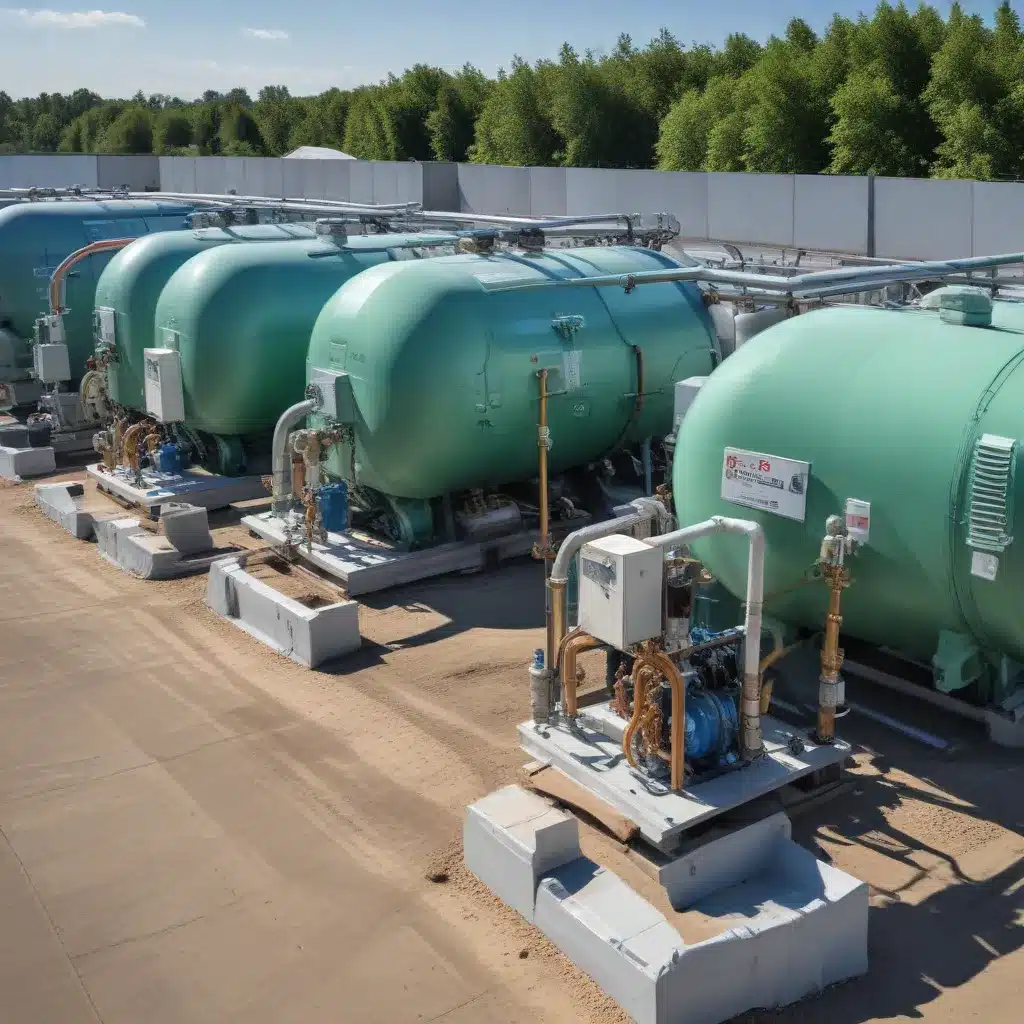
The HVACR industry is facing growing environmental and regulatory pressures, driving the need for innovative solutions to responsibly manage refrigerants throughout their lifecycle. As local regulations evolve, such as California’s State Bill 1206 that limits the use of high-Global Warming Potential (GWP) refrigerants, the demand for reclaimed refrigerant alternatives has never been greater. Fortunately, the advent of advanced refrigerant reclamation processes and emerging technologies is revolutionizing the way the industry optimizes refrigerant supply and enhances sustainability.
Advanced Refrigerant Reclamation Processes
Refrigerant reclamation is a critical step in establishing a circular economy for these vital HVACR fluids. The process involves the extraction, purification, and reintroduction of used refrigerants back into the supply chain, ensuring a reliable and environmentally responsible source of low-GWP alternatives to virgin refrigerants.
Refrigerant Extraction and Purification
At the heart of refrigerant reclamation are sophisticated extraction and purification techniques. Through a multi-stage process, impurities and contaminants are removed from used refrigerants, restoring them to AHRI-700 standards for virgin-grade quality. This enables the reclaimed refrigerant to be safely reused in a variety of HVACR applications, reducing the need for new refrigerant production and minimizing the environmental impact.
High-Efficiency Refrigerant Recovery
Efficient refrigerant recovery is the foundation of successful reclamation. Services like A-Gas Rapid Recovery® utilize specialized equipment and streamlined procedures to quickly and safely extract refrigerants from HVAC systems during service, maintenance, or decommissioning. By minimizing refrigerant loss, these high-speed recovery solutions support the circular lifecycle of these valuable resources.
Closed-Loop Refrigerant Recycling
Advanced reclamation approaches also incorporate closed-loop recycling systems, where refrigerants are continuously recovered, purified, and reintroduced into the supply chain. This circular model not only reduces overall refrigerant consumption but also mitigates the environmental impact of improper disposal or release. By keeping refrigerants in constant circulation, these systems enhance the sustainability of the HVACR industry.
Emerging Refrigerant Reclamation Technologies
Alongside the refinement of traditional reclamation methods, innovative technologies are emerging to further optimize the process and overcome existing challenges.
Cryogenic Distillation Techniques
Cryogenic distillation is a promising approach that utilizes extremely low temperatures to separate and purify refrigerants. This method can effectively remove contaminants and isolate individual refrigerant components, yielding high-purity reclaimed refrigerant that meets stringent industry standards. The energy-efficient nature of cryogenic distillation also contributes to its environmental sustainability.
Membrane-Based Separation Systems
Membrane-based separation technologies leverage advanced materials and physical processes to filter and purify refrigerants. These systems can selectively remove specific impurities, allowing for more targeted and efficient purification. By integrating these membrane-based methods into reclamation workflows, HVACR professionals can further enhance the quality and availability of reclaimed refrigerants.
Catalytic Conversion Approaches
Catalytic conversion techniques offer an innovative solution for the reclamation of refrigerants. By leveraging specialized catalysts, these processes can break down and convert complex refrigerant molecules into simpler, reusable compounds. This enables the reclamation of a wider range of refrigerant types, expanding the pool of available low-GWP alternatives and supporting the industry’s transition towards more sustainable solutions.
Environmental Benefits of Refrigerant Reclamation
The environmental advantages of effective refrigerant reclamation are profound, contributing to a more sustainable future for the HVACR industry.
Reduced Greenhouse Gas Emissions
When used refrigerants are responsibly recovered and reclaimed, it prevents their harmful release into the atmosphere, reducing the emission of potent greenhouse gases. This aligns with the industry’s collective efforts to mitigate climate change and meet evolving regulatory requirements, such as the Kigali Amendment to the Montreal Protocol.
Improved Circular Economy for Refrigerants
Refrigerant reclamation is a key component of the circular economy, where materials are continuously reused and repurposed. By reintroducing reclaimed refrigerant back into the supply chain, the need for new refrigerant production is diminished, conserving natural resources and reducing the overall environmental footprint of the HVACR industry.
Compliance with Regulatory Frameworks
As legislation continues to tighten around the use of high-GWP refrigerants, the availability of reclaimed refrigerant alternatives becomes increasingly important. Robust reclamation processes enable HVACR professionals to navigate these compliance challenges, ensuring their operations remain environmentally responsible and aligned with regulatory requirements.
Challenges and Opportunities in Refrigerant Reclamation
While the advancements in refrigerant reclamation offer significant benefits, there are still obstacles to overcome in order to fully realize its potential.
Economic Feasibility and Scalability
Implementing advanced reclamation technologies requires substantial upfront investments, which can pose a challenge for some HVACR businesses. Ensuring the economic viability and scalability of these solutions is crucial to driving widespread adoption throughout the industry.
Adoption of Advanced Reclamation Practices
Educating HVACR professionals on the importance of responsible refrigerant management and the benefits of reclamation is an ongoing effort. Overcoming the inertia of traditional practices and incentivizing the adoption of advanced reclamation methods are key to achieving a more sustainable future.
Collaboration across the Supply Chain
Effective refrigerant reclamation requires seamless coordination and cooperation across the entire HVACR supply chain, from manufacturers and distributors to service technicians and facility managers. Fostering these collaborative partnerships and aligning incentives can unlock the full potential of a circular refrigerant economy.
By navigating these challenges and capitalizing on the innovations in refrigerant reclamation, the HVACR industry can enhance the circularity of refrigerant lifecycles, contributing to a more sustainable and environmentally responsible future. As the industry continues to evolve, the advancements in reclamation processes and technologies will play a pivotal role in supporting the HVACR sector’s journey towards a greener, more efficient, and compliant future.

